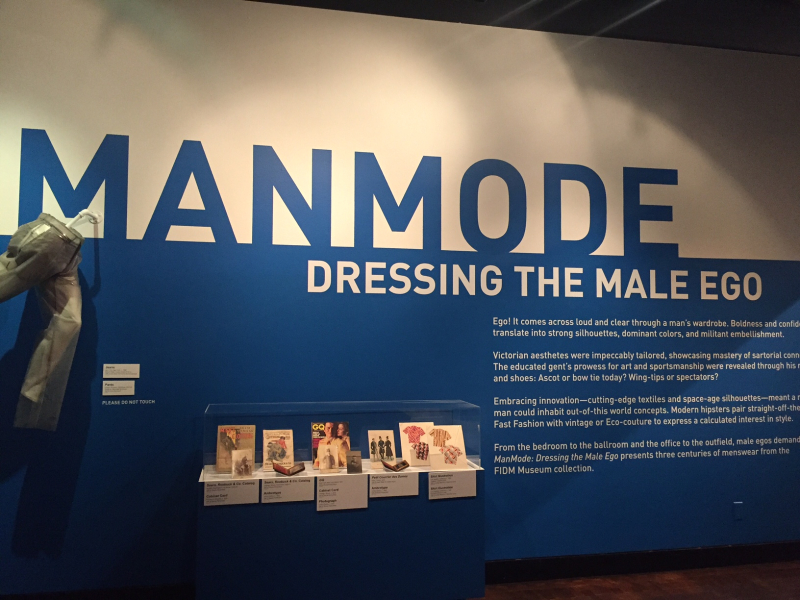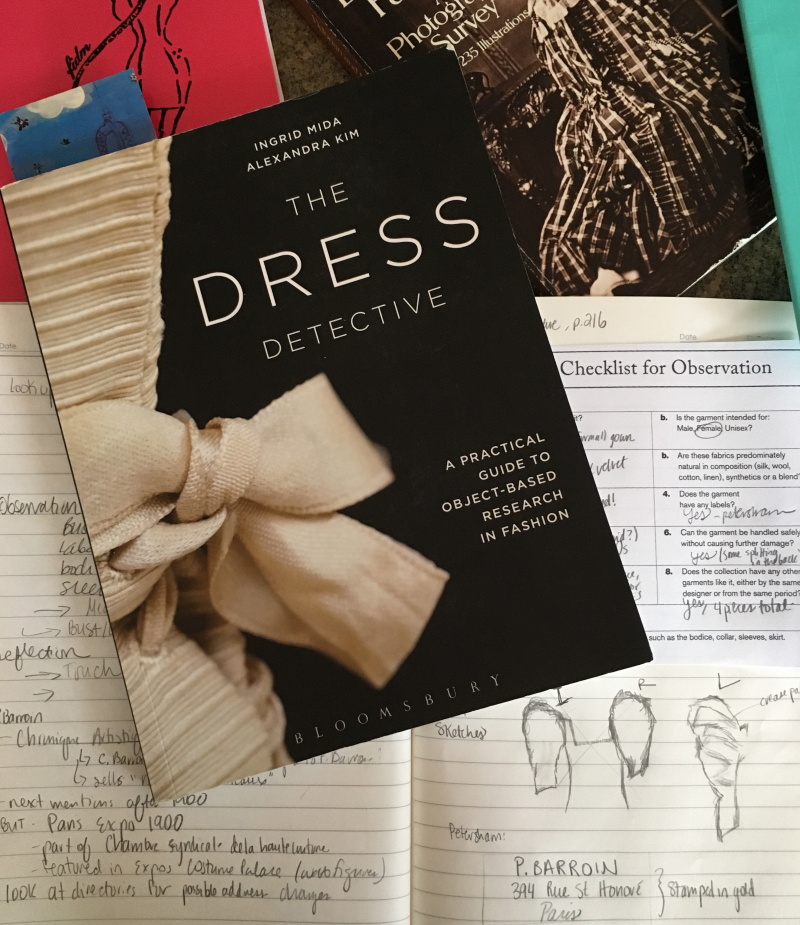Intern Report: Kasia Stempniak
We are exceptionally lucky at the FIDM Museum to have the help of talented interns and volunteers throughout the year. This summer, we were thrilled to welcome Kasia Stempniak as our intern, who worked on curatorial research (including French translations), exhibition installation, and everything in between. Kasia is a Ph.D. candidate in Romance Studies at Duke University. Her dissertation looks at the connections between fashion, literature and urban space in mid-to-late 19th century Paris. This fall, she will head to Paris as an exchange student at the Ecole Nationale Supérieure (ENS) where she will be researching and writing her dissertation.
Thank you Kasia for your outstanding work this summer! This is Part One of Kasia's Intern Report...stay tuned later this week for Part Two!
*********************************************************************
During my summer internship at the FIDM Museum I had the opportunity to gain first-hand experience in many areas of museum life, from object handling and research to donor relations to exhibition installation. Fortunately, the last few weeks of my internship coincided with the installation of ManMode: Dressing the Male Ego, a new exhibition in the FIDM Museum History Gallery that showcases bold menswear over the past three centuries. As someone who has always loved visiting museums, especially fashion exhibitions, the chance to participate in the behind-the-scenes of an exhibition was a truly special experience.
Over two weeks, I had the chance to see objects through virtually all stages of preparation for display: pulling pieces from storage, choosing the right accessories, and dressing mannequins. This latter task was entirely new to me but as I soon found out, building the right mannequin is an essential component of any successful fashion exhibition. Learning to properly pad and shape mannequins with foam and/ or tissue requires patience but it made me much more aware of the relationship between the body and clothing. The differences in posture and body proportions between an early nineteenth-century body and a twentieth-century one become very apparent when fitting garments! Dressing a mannequin also requires meticulous attention to detail and observance of conservation standards so that no harm may come to the garment. A highlight in particular I’ll cherish for years to come was helping dress this circa 1810 three-piece court suit worn by the Austrian musician Johann Hummel.
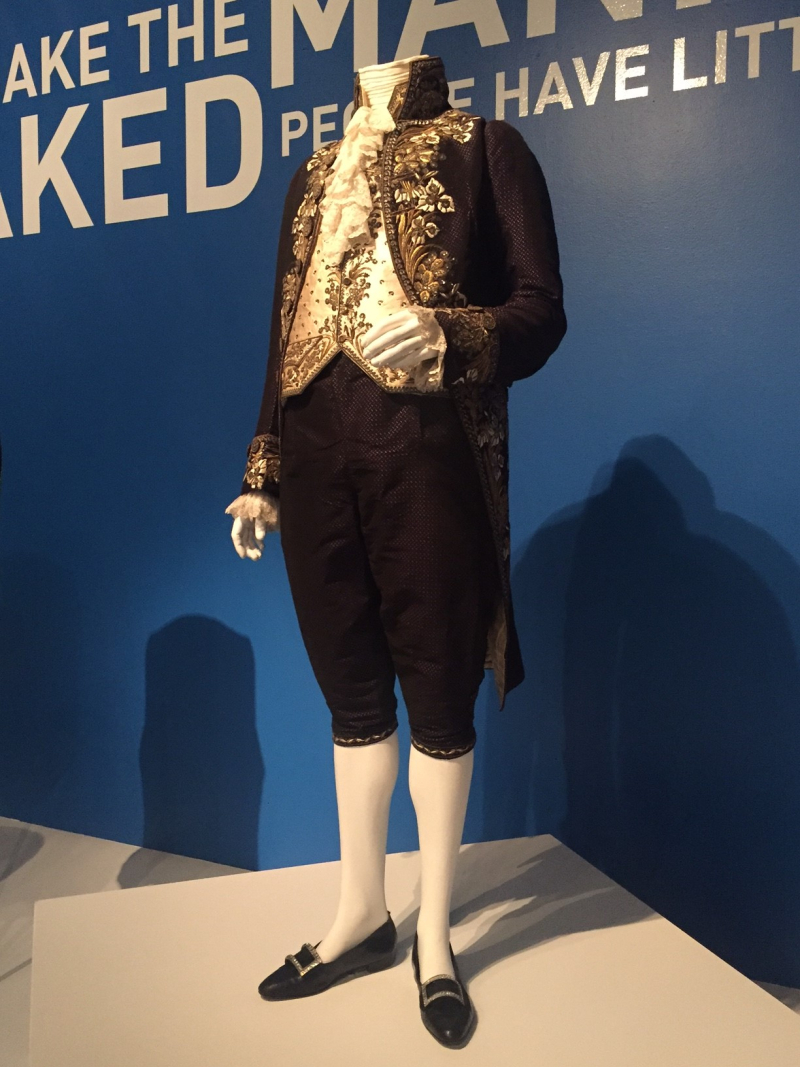 Court Suit
Court Suit
Paris, France, c. 1810-1814
Gift of Yvonne Hummel
2008.947.2A-C
Seeing how Curator Kevin Jones and Associate Curator Christina Johnson organized and displayed the various garments, accessories, and ephemera in a harmonious yet didactic manner made me much more appreciative of the work of museum curators. The final addition of the two sets of pants ‘running’ along the exhibition wall showed off the creative possibilities the space of the Gallery offers.
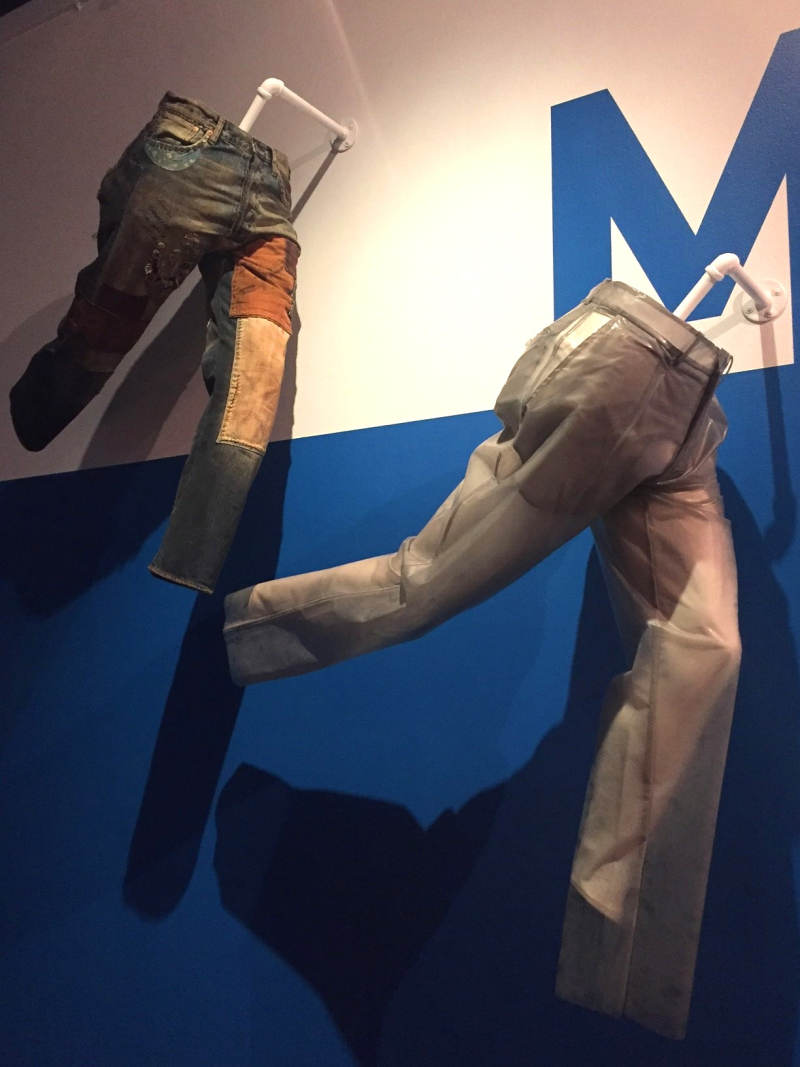 Left: Jeans, Ralph Lauren Double R & Co., New York, c. 1993. Gift of Joan Beer Damask and Donald Damask. 2013.1250.119. Right: Pants, Alexander McQueen, London, Fall-Winter 2007-08. Gift of Doris Raymond. 2015.800.2.
Left: Jeans, Ralph Lauren Double R & Co., New York, c. 1993. Gift of Joan Beer Damask and Donald Damask. 2013.1250.119. Right: Pants, Alexander McQueen, London, Fall-Winter 2007-08. Gift of Doris Raymond. 2015.800.2.
French philosopher Georges Bataille once described museums as “the lungs of a city” and I find fashion museums to be no exception. [1] I came away from my internship in awe of the work that goes into creating these spaces where the public can breathe in and contemplate fashion history.
Aside from helping install ManMode, my primary task during my internship was researching for the FIDM Museum’s upcoming exhibition Outdoor Girls: Sporting Fashion, 1800- 1950s. Slated for 2019, the exhibition will look at the evolution of women’s leisure and sportswear over the past two centuries. I researched 19th and early 20th century French primary sources and had the incredible opportunity to see many of the items that will be included in the exhibition. As I read fashion journals and memoirs from the Belle Époque, I came across the usual suspects in dressmaking-- Worth, Pingat, Doucet, etc. But I became more interested in the lesser-known names cropping up that I had never heard of, like Drecoll or Maison Laferrière. One week, I kept seeing the name P. Barroin in a fashion column in the French newspaper Le Figaro and for some reason, the name rang a bell. After some backtracking, I realized I had come across the name in the FIDM Museum’s Fabulous! exhibition catalogue. It turns out this red and white print gown by Barroin is one of four garments attributed to Barroin in the FIDM Museum Collection.
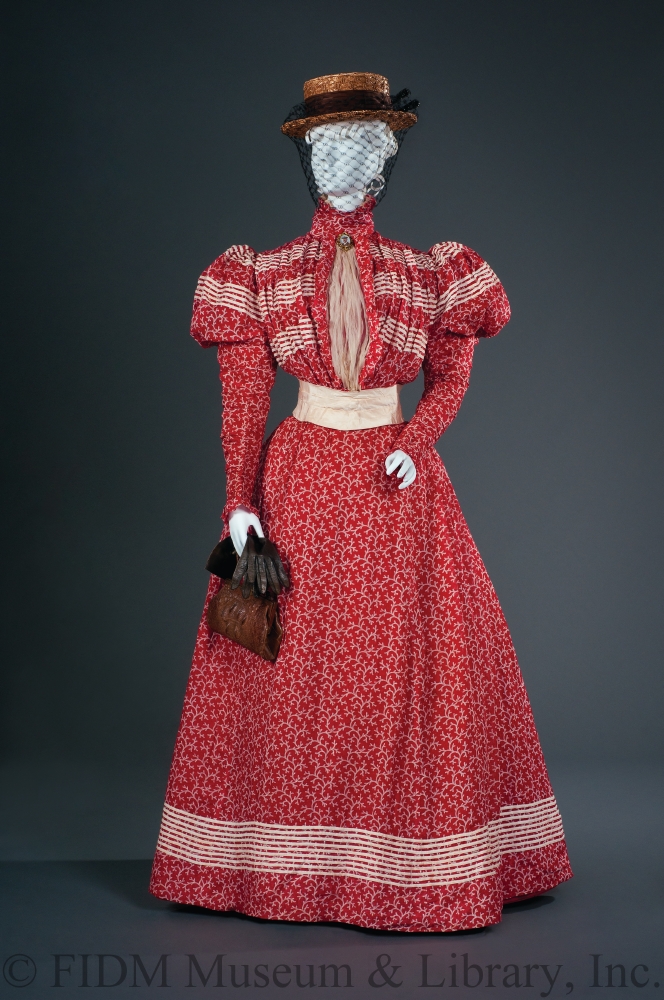
Day Ensemble
Paris, France, c. 1897-1898
Gift of Jane Riggs and Lynelle Doll
2010.1098.3AB
Towards the end of my internship, I decided to combine what I had learned about object handling with my passion for research by conducting a case study of a gown in the Museum’s collection. Since I came from a background in literature, this type of object-based research was unfamiliar to me. In order to better initiate myself into this new line of inquiry, Christina Johnson had suggested I read Ingrid Mida and Alexandra Kim’s book The Dress Detective: A Practical Guide to Object-Based Research in Fashion, an in-depth guide on analyzing and handling objects.
They advocate a three-step method—observation, reflection, and interpretation-- designed to help the researcher understand and contextualize a given object. With Christina’s help, I summoned my inner Sherlock Holmes and applied what I had learned during my internship to an exquisite red velvet Belle Époque gown in the Museum’s collection. I'll share my findings in part two of my Intern Report later this week!
Although my time in LA ended too quickly, I could not have asked for a better team to work with or for a better internship experience. I am grateful to have been a part of such a welcoming environment that fosters intellectual curiosity and top-notch research and curation. I look forward to seeing all the exciting projects and exhibitions the Museum has planned in the next few years!
[1] Bataille, Georges, “Museums” in Rethinking Architecture: A Reader in Cultural Theory, ed. Neil Leach (London: Routledge, 1997), 21.
